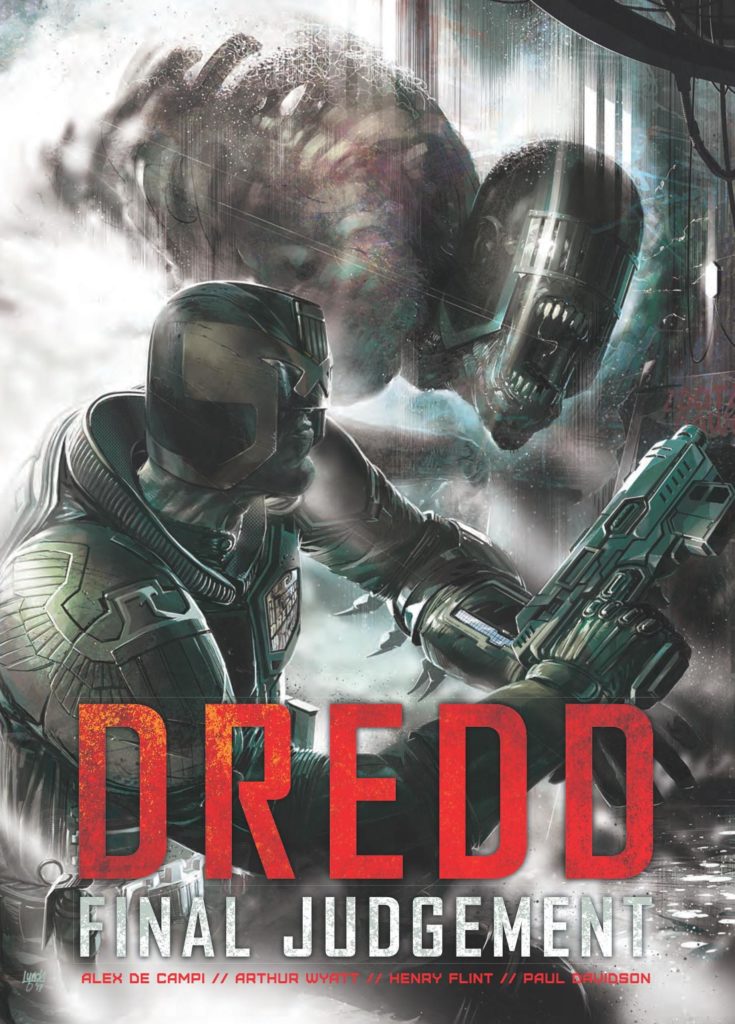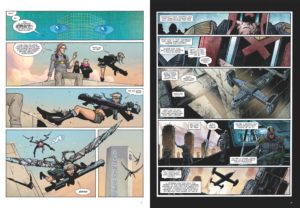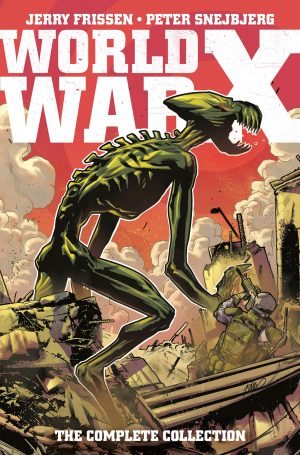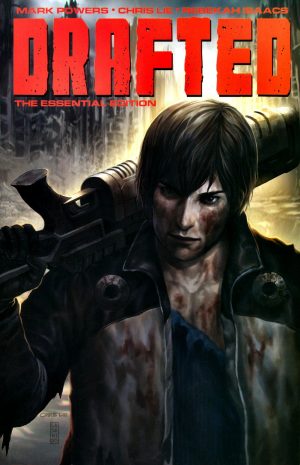Review by Karl Verhoven
With the release of a second Judge Dredd film in 2012, Dredd’s world in the comics split into two continuities, the regular series that had been running for years, and a limited number of stories based on the more restricted movie version of Dredd. Final Judgement is set in the latter, bringing it to a close in fact. The setting has to be kept in mind, as while Alex De Campi and Arthur Wyatt seem to be writing a straightforward Dredd story, Paul Davidson’s art shows a far less cramped and crowded Mega-City than we’re used to. That’s accentuated by Len O’Grady’s colouring which has a brightness not generally connected with Dredd and his world, and avoided in Urban Warfare, yet it also serves to distance this iteration of Dredd.
The initial focus is on one of Ma-Ma’s former computer technicians, now named Bill Huxley and working on a construction site maintaining robots when some crooks learn of his past. It’s his story, with Dredd only having a minor role, and De Campi and Wyatt present him as extending a long tradition of sad sacks in Dredd strips, basically well intentioned, but desperate and caught up in circumstances beyond their control. The sick child is slightly over-egging, intended to induce empathy at a later stage, but the tradition is continued well, and the story works for what it’s supposed to be.
For the full impact it’s best to avoid De Campi’s introduction before starting on ‘The Dead World’. The cover shows Judge Death putting in an appearance, and it’s here that he manifests, given a very creepy initial incarnation by artist Henry Flint. De Campi and Wyatt introduce the idea of researchers discovering a dead dimension adjacent to theirs, and attempting to harness the energy from it in small doses. In true horror film tradition, they’re totally unprepared for what emerges along with that energy. De Campi and Wyatt have the luxury of dealing with Judge Death as an iconic character, fully fleshed out and known to the audience, while when John Wagner created him, there was no inkling of what he’d develop into. This leads to a more credible introduction in some respects, but despite De Campi’s enthusiasm it results in disappointment. Flint plays his part in capturing the existential horror that emerges, but the writers are replaying what’s happened in other stories.
One of Judge Death’s strongest points has always been the snappy single lines he spouts about his malign intentions. Maybe De Campi and Wyatt are attempting to differentiate Death and his allies from the core versions, but “You’re using gas to calm citizens down. But that won’t last. You’ll just have to do it all again tomorrow. Our way is better.” is turgid. The only new item the writers really bring to the table is the ending, which closes the world of the movie Dredd without taking the easiest option, but fails to capitalise on the potential. It’s realism instead of fantasy, and very disappointing.





